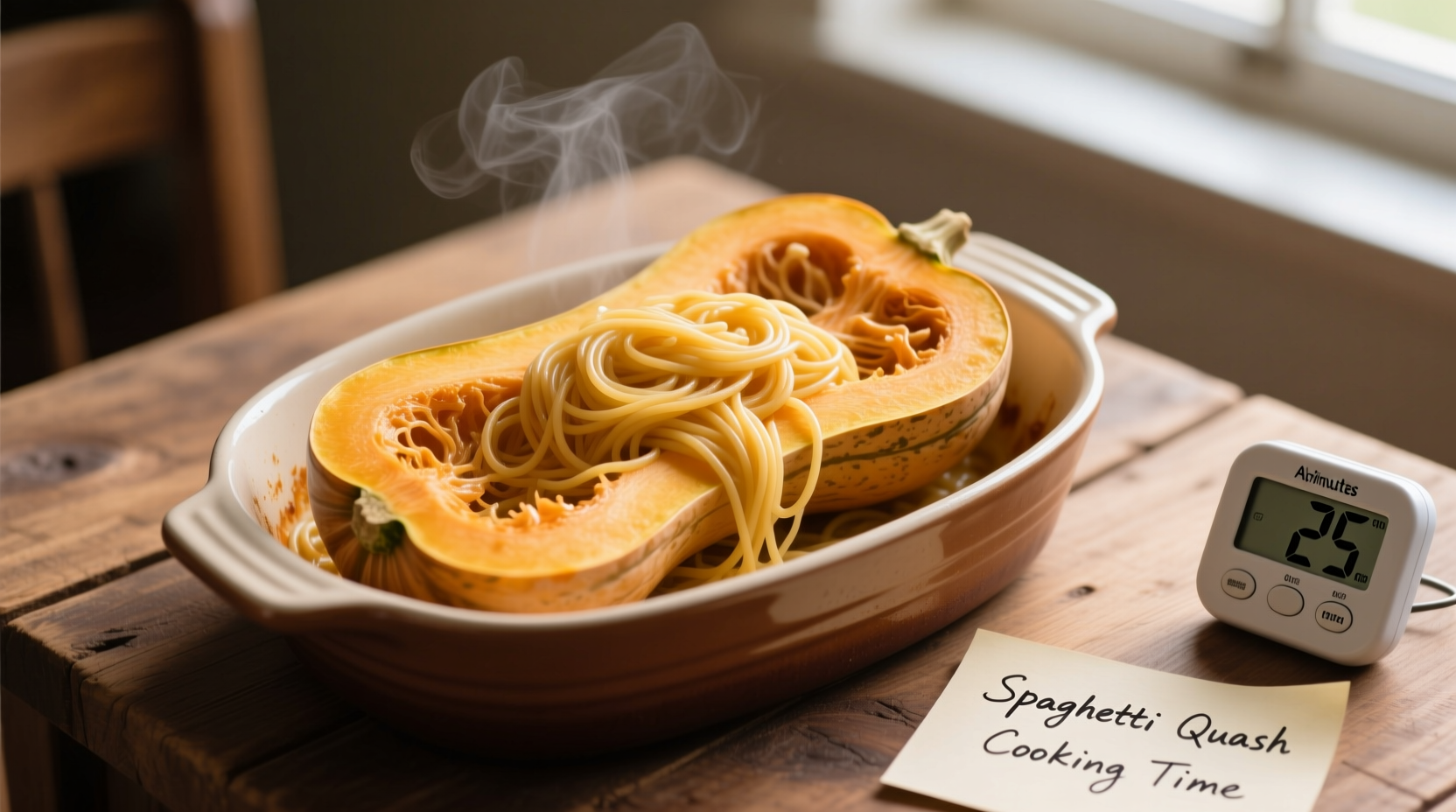Spaghetti squash typically takes 35-45 minutes to roast at 400°F (200°C), 10-12 minutes to microwave, or 20-30 minutes to boil. The exact time depends on size, cooking method, and desired tenderness.
Discover exactly how long spaghetti squash needs to cook using your preferred method, with precise timing guidance backed by culinary science. Whether you're roasting, boiling, microwaving, or using an Instant Pot, this guide delivers the accurate cooking times you need for perfect results every time—no more mushy or undercooked squash.
Why Proper Cooking Time Matters for Spaghetti Squash
Getting the timing right transforms spaghetti squash from a disappointing texture to a delightful pasta alternative. Undercooked squash remains too firm with little strand separation, while overcooked squash turns mushy and loses its signature spaghetti-like texture. The ideal cooking time creates those perfect, tender strands that separate easily with a fork.
Choosing and Preparing Your Spaghetti Squash
Before timing your cooking, proper preparation ensures even cooking:
- Select firm squash with dull, not glossy, skin and heavy for its size
- Store uncut at room temperature for up to 3 months
- Wash thoroughly before cutting to remove surface dirt
- Cut lengthwise carefully using a sharp chef's knife (microwaving first for 2-3 minutes softens the skin)
- Remove seeds with a sturdy spoon, similar to preparing a pumpkin
| Cooking Method | Prep Time | Cook Time | Total Time |
|---|---|---|---|
| Roasting | 10 minutes | 35-45 minutes | 45-55 minutes |
| Boiling | 15 minutes | 20-30 minutes | 35-45 minutes |
| Microwaving | 5 minutes | 10-12 minutes | 15-17 minutes |
| Instant Pot | 10 minutes | 7-10 minutes | 20-25 minutes |
Complete Cooking Time Guide by Method
Roasting Spaghetti Squash (Most Flavorful Method)
Roasting develops the best flavor through caramelization. Place cut-side down on a parchment-lined baking sheet.
- Small squash (2-3 lbs): 35-40 minutes
- Medium squash (3-4 lbs): 40-45 minutes
- Large squash (4+ lbs): 45-50 minutes
According to the National Center for Home Food Preservation, roasting at 400°F ensures proper internal temperature while maintaining texture integrity. The squash is done when a fork easily pierces the skin and strands separate when scraped.
Boiling Spaghetti Squash (Traditional Approach)
Boiling works well but can make the strands slightly waterlogged if overcooked.
- Cut halves: 20-25 minutes
- Whole small squash: 30-35 minutes
- Chunks: 15-20 minutes
The U.S. Food and Drug Administration recommends boiling vegetables until fork-tender but not falling apart, which for spaghetti squash typically falls within this 20-30 minute range depending on size.
Microwaving Spaghetti Squash (Fastest Method)
Microwaving dramatically reduces cooking time while maintaining texture.
- Cut halves: 10-12 minutes
- Whole small squash: 12-15 minutes
Place cut-side down in a microwave-safe dish with 2 tablespoons of water. Cover with a microwave-safe lid or plastic wrap, leaving a small vent. Check for doneness at 10 minutes. This method aligns with recommendations from University of Minnesota Extension for quick vegetable preparation that preserves nutrients.

Instant Pot Spaghetti Squash (Pressure Cooking)
Pressure cooking delivers consistent results with minimal hands-on time.
- Cut halves: 7 minutes high pressure + 10 minute natural release
- Whole small squash: 10 minutes high pressure + 15 minute natural release
Add 1 cup of water to the pot, place squash on the trivet, and cook according to size. The natural release time is crucial for proper strand formation. This timing follows the safety and quality guidelines established by the National Center for Home Food Preservation for pressure cooking vegetables.
How to Test for Perfect Doneness
Regardless of cooking method, test for doneness by:
- Inserting a fork into the thickest part of the flesh
- Checking if strands separate easily when scraped with a fork
- Ensuring the flesh is tender but not falling apart
- Verifying the internal temperature reaches 200-205°F (93-96°C) for optimal strand formation
Undercooked squash will resist separation, while overcooked squash becomes waterlogged and mushy. The ideal texture should resemble al dente pasta.
Serving and Storage Tips
After cooking, let spaghetti squash rest for 5-10 minutes before scraping out the strands. This allows the strands to firm up slightly for better texture.
- Serving: Toss with olive oil or butter immediately after scraping to prevent drying
- Refrigeration: Store cooked strands in an airtight container for 4-5 days
- Freezing: Freeze cooked strands for up to 8 months (thaw in refrigerator before reheating)
- Reheating: Microwave 1-2 minutes or sauté in a pan with oil for best texture
For meal prep, cooking spaghetti squash in advance saves significant time during busy weeks. The strands reheat well and maintain their structure better than many other vegetable alternatives.
Troubleshooting Common Cooking Issues
Problem: Squash is too watery
Solution: After cooking, place strands in a colander for 5-10 minutes to drain excess moisture, or sprinkle with salt and let sit for 5 minutes before draining.
Problem: Strands won't separate
Solution: Return to oven or microwave for additional 5 minutes of cooking time, then test again.
Problem: Uneven cooking
Solution: Cut squash into more uniform pieces or rotate baking sheet halfway through roasting.











 浙公网安备
33010002000092号
浙公网安备
33010002000092号 浙B2-20120091-4
浙B2-20120091-4